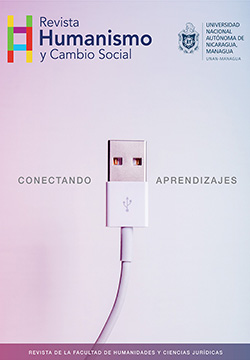Dominancia Cerebral y Educación Universitaria
DOI:
https://doi.org/10.5377/hcs.v0i10.8250Palabras clave:
Dominancia cerebral, educación superiorResumen
Los descubrimientos en neurociencia sobre dominancia cerebral y sus múltiples aplicaciones para la vida han ido en aumento. Hay muchos trabajos investigativos de aplicación de la neurociencia en la mejora educativa, aunque existen pocos a nivel de educación superior. Este estudio tuvo dos propósitos; el primero, identificar y comparar los perfiles de dominancia cerebral de los estudiantes de la carrera de Psicología de la UNAN-Managua en distintos años académicos (2009, 2010 y 2013). El segundo, verificar la dominancia cerebral en una muestra de estudiantes, al inicio y al final de su carrera. Los resultados de la investigación evidencian una dominancia simple, la preferencia del hemisferio izquierdo, sobre todo del Cortical Izquierdo; Baja dominancia en el hemisferio derecho en especial del cuadrante Límbico Derecho. Por otro lado, con base en la comparación de los puntajes obtenidos en el pre test y post test, se observa que no hay cambios con respecto a la dominancia de los diferentes cuadrantes tanto del hemisferio Izquierdo como del Derecho. Para evaluar la tendencia a utilizar los cuatros cuadrantes por los estudiantes, de acuerdo con el modelo de cerebro total propuesto por Ned Herrmann (1989), se utilizó el test de Chalvin (1993), instrumento auto administrado que se responde en un lapso de 15 a 20 minutos y consta de 22 ítems (con cuatro opciones de respuesta, de las cuales se eligen una o dos) relacionados con actividades de estudio y de la vida diaria. Las respuestas se trasladan a una plantilla de corrección y, sumadas las puntuaciones por cuadrante, se obtiene el perfil.
Descargas
2767
Citas
Calle, M. G., Cleves, N. R., & Burgos, B. M. (2008). Relación entre los perfiles de dominancia cerebral de los estudiantes de primero, quinto y décimo semestres delPrograma de Bacteriología y Laboratorio Clínico de la Universidad Colegio Mayor de Cundinamarca. Nova,6(9), 40. doi:10.22490/24629448.395
Caza. P., (2005) Modelo de los cuadrantes generales (disponible en: http://www.rmm.cl/index_
Chalvin. M. J., (2003): Los dos cerebros en el aula. (3ª. ed.) Madrid: TEA Ediciones.Traducción: Ma. Victoria de la Cruz.
Gómez. A. Recio. R. Gómez. D. Lóez. H. (2010): Diagnóstico de estilo de aprendizaje en estudiantes universitarios de nuevo ingreso basado en la dominancia cerebral. Revista Estilos de aprendizaje, num. 5, vol 5, 2010. (Disponible en http://www.uned.es/revistaestilosdeaprendizaje/numero_5/articulos/
lsr_5_articulo_4.pdf). Consultada en abril 2012.
Kandel, E. R., Schwartz, J. H., & Jessell, T. M. (2008). Neurociencia y conducta. Madrid: Pearson Educación.
Martínez. M. (1992). El proceso creador a la luz de la neurociencia. Publicación: Comportamiento 1993. V2 n1. (Disponible en: http://www.comportamiento.dsm.usb.ve/revista/vol2_n1_93.pdf
Publication manual of the American Psychological Association. (2016). Brantford, Ontario: W. Ross MacDonald School Resource Services Library.
Rómulo. O, Marval. O., (2000): Avances de las neurociencias. Implicaciones en la educación. Revista Agenda académica 2007. v7, n2. (Disponible en: http://www.virtual.unal.edu.co/cursos/humanas/mtria_edu/2021076/und_1/
pdf/lectura3m1estacion2.pdf. Consultada en enero 2010).
Rojas, G., Salas, R., & Jimenez, C. (2006). Estilos De Aprendizaje Y Estilos De Pensamiento Entre Estudiantes Universitarios. Estudios Pedagógicos (Valdivia),32(1). doi:10.4067/s0718-07052006000100004




